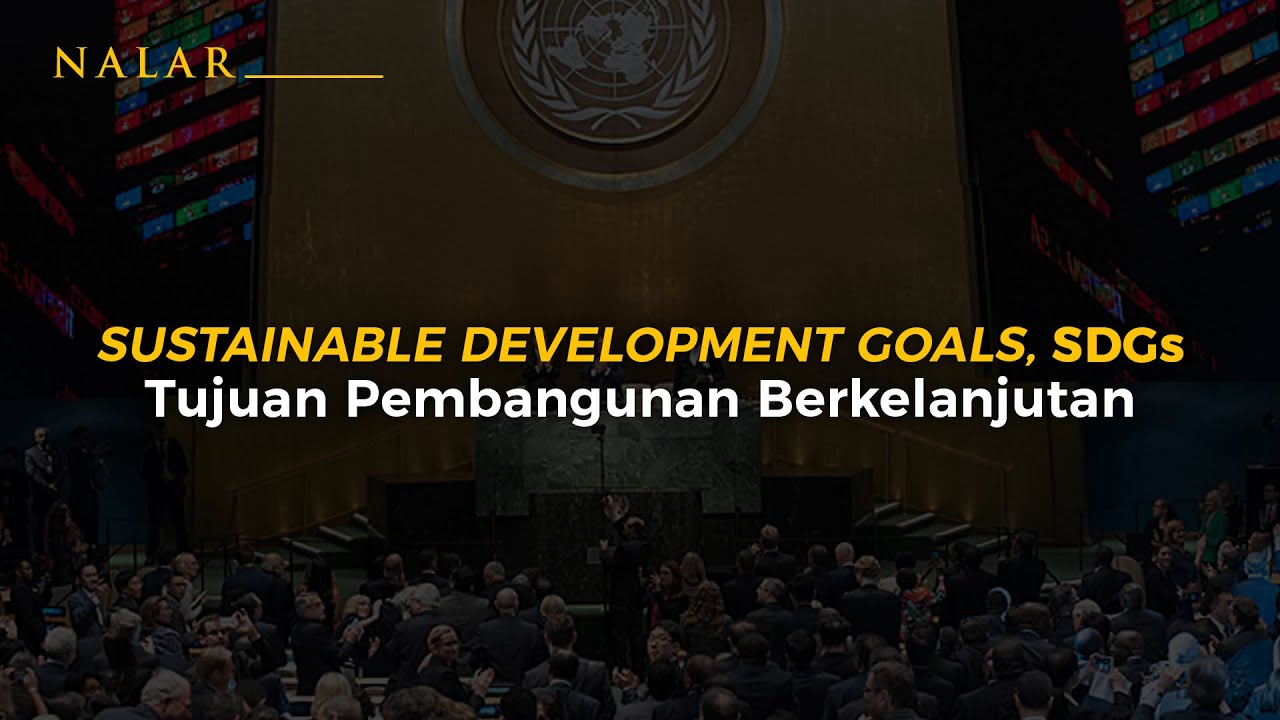A historical introduction to the SDGs
Summary
TLDRThe video discusses the evolution of global development goals, tracing their roots from the Millennium Development Goals to the Sustainable Development Goals (SDGs). It highlights the shift from a focus on redistribution to prioritizing economic growth, sustainability, and inclusiveness post-Cold War. The UN's role in unifying international objectives, alongside the input from civil society, is emphasized, showcasing a consensus for addressing global issues collectively. However, challenges such as authoritarian regimes and cultural considerations remain. The narrative underscores the urgent need for collaborative efforts to enhance living conditions and tackle pressing global challenges.
Takeaways
- 🌍 The Sustainable Development Goals (SDGs) have their roots in the post-Cold War era, reflecting a shift in international development priorities.
- 📜 The Millennium Development Goals (MDGs), initiated in the year 2000, laid the groundwork for the contemporary SDGs, evolving from earlier cooperative efforts.
- 💡 The emergence of the SDGs was fueled by a need for global consensus on developmental objectives that encompass both rich and poor countries.
- 📈 Economic growth is identified as a key driver of social and environmental progress, shifting the focus from merely redistributing aid to fostering development.
- 🤝 The report stresses the importance of inclusive growth, highlighting the necessity for both local and global collaboration to address diverse challenges.
- 🔑 Good governance, civil liberties, and human rights are crucial for achieving the SDGs, despite some topics being excluded from negotiations.
- 🚫 Cultural rights and individual freedoms remain blind spots in international discussions on the SDGs, potentially hindering comprehensive solutions.
- 🌿 Environmental sustainability has become a central issue in the political agenda since the year 2000, requiring a holistic approach to development.
- ⚖️ The SDGs aim to eliminate poverty and promote a fairer global society, encapsulated in the slogan 'leave no one behind.'
- 🔄 The evolution of the SDGs signifies a transformation in the approach to development, advocating for a balance between economic, social, and environmental objectives.
Q & A
What historical event marks the beginning of the discussion on sustainable development goals (SDGs)?
-The discussion on SDGs can be traced back to the end of the 1990s, particularly following the fall of the Berlin Wall.
How did the Millennium Development Goals (MDGs) evolve from earlier development objectives?
-The MDGs emerged from the earlier Millennium Objectives for Development, which were influenced by the need for international solidarity and the changing political landscape post-Cold War.
What role did the OECD play in the development of the MDGs?
-The OECD's stakeholders mobilized public opinion to demonstrate the value of foreign aid, which led to the establishment of the MDGs with specific goals and targets.
What was the significance of the 2000 Millennium Development Declaration?
-The declaration set six initial goals focused on development, which were designed to be universal and applicable to both rich and poor countries.
What were the main critiques of the MDGs mentioned in the transcript?
-Critiques included the technocratic nature of the goals, the lack of binding commitments, and the focus on redistribution rather than growth and sustainability.
What did the 2013 report emphasize regarding growth and social progress?
-The report emphasized that economic growth, rather than aid, is the main driver of social and environmental progress.
How do the SDGs differ from the previous Millennium Goals?
-The SDGs represent a paradigm shift from a focus on redistribution to a broader emphasis on inclusive growth, environmental sustainability, and the involvement of multiple stakeholders, including the private sector.
What key themes were excluded from the negotiations regarding the SDGs?
-Culture and human rights, particularly regarding economic civil liberties, were significant themes that were avoided during the negotiations.
What does the phrase 'leave no one behind' signify in the context of the SDGs?
-'Leave no one behind' reflects the commitment to address inequality and ensure that the benefits of development reach all people, especially marginalized groups.
What challenges does the UN face in achieving the SDGs, as mentioned in the transcript?
-The UN faces challenges such as fragmentation in global governance, difficulties in reaching international consensus on environmental issues, and the rise of authoritarian regimes that may hinder progress.
Outlines

このセクションは有料ユーザー限定です。 アクセスするには、アップグレードをお願いします。
今すぐアップグレードMindmap

このセクションは有料ユーザー限定です。 アクセスするには、アップグレードをお願いします。
今すぐアップグレードKeywords

このセクションは有料ユーザー限定です。 アクセスするには、アップグレードをお願いします。
今すぐアップグレードHighlights

このセクションは有料ユーザー限定です。 アクセスするには、アップグレードをお願いします。
今すぐアップグレードTranscripts

このセクションは有料ユーザー限定です。 アクセスするには、アップグレードをお願いします。
今すぐアップグレード関連動画をさらに表示

Episode 4: Origin Story of Sustainable Development Goals | Origin of SDGs | SDG Plus

NALAR Ep. 47 APA ITU SUSTAINABLE DEVELOPMENT GOALS (TUJUAN PEMBANGUNAN BERKELANJUTAN)?

SDG sectorial universality : all fields are covered

The United Nations Sustainable Development Summit: 17 Goals to Transform Our World

أهداف التنمية المستدامة

The Sustainable Development Goals – Action Towards 2030 | CAFOD and SDGs
5.0 / 5 (0 votes)
